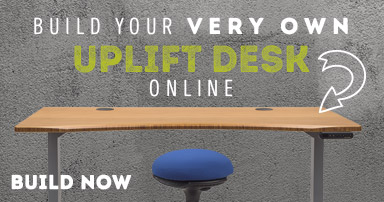Ergonomics and the Work Force: There is No Easy Fix For Everyone, But Help is Out There
Posted by Human Solution on Dec 5th 2012
Our content writer, Mitch Miller, is currently attending the 2012 ErgoExpo in Las Vegas. Here’s one of Mitch's posts from the expo.
Just as there is no single piece of ergonomic equipment that will alleviate all problems for all people, there is no set of policies that will enable all workers to remain happy and productive at all companies. Judgments should be made on a case-by-case basis. One must consider the culture of the company, as well as its objectives.
"The Aging Workforce” was the topic of the keynote address at the amazing first day of Ergo Expo 2012 in Las Vegas. And while we at Human Solution specialize more generally in finding solutions to make a specific workstation more comfortable and efficient for a worker, this is a topic that is relevant to all large businesses, and an interesting one at that, so this post will discuss this emerging area of research.
Older workers require different conditions than young or mid-career workers. A simple example: The body of an older worker can handle different levels of light and different levels of sound. Older workers are conditioned to wake up earlier in the day than younger workers. Additional differences may be communication-related, health care-related, and environmental. Older workers excel in areas other than those that younger workers will.
In order to get the most out of a workforce, these individual factors need to be considered. We were shown examples of policies that have been adopted by large companies, two of which I believe do an adequate job of giving an overview of these considerations.
Many companies have adopted a “reverse mentorship” program, wherein executives teach younger workers to develop skills such as face-to-face communication. In exchange, younger workers offer their own perspective. A “generational gap” is not a thing that should be solved but rather narrowed. It is valuable to have workers of all ages at a company as they are able to offer a multitude of skills that will improve the workforce as a whole.
Another policy that was interesting and useful is the “Snowbirds” program at CVS Pharmacies. The policy came from CVS’s need to retain many of their valuable older workers in cold weather cities. These workers wanted to remain with the company but needed increased flexibility to travel to warmer locales during the winter. Vacation time was not an option. The Snowbirds program was created to allow these workers seasonal flexibility; they work at a CVS pharmacy in their city during the spring, summer and fall. During the winter, they are allowed to transfer to work at a pharmacy in a warmer city.
One can’t create a credible solution to specific problem in a general way. There is no “easy fix” to the increasing size of the aging workforce; there is nothing to fix. Each decision must be made on an individual scale by the company. One must consider what the workers bring to their company and what they are asking for. This relates to what we do at Human Solution because we strive to create an ergonomic solution to an individual’s problems. Policy makers must understand that concessions must be made to different demographics.
Thanks to the researchers at Boston College for amassing this incredible and thought-provoking body of research. For more information, please visit the Sloan Center for Aging and Work homepage.




